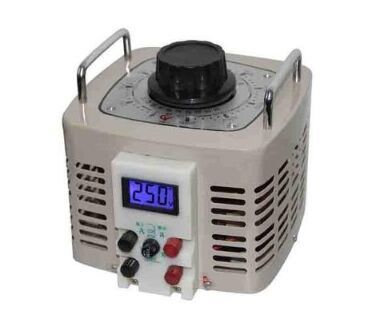The compound regulator is a new type of multifunctional regulator. It can greatly simplify the installation and commissioning of the complex regulation system, and facilitate the technical transformation of the old system.
The compound regulator is a kind of compound regulator in which the improved regulating unit, the servo unit, and the operating unit are connected into a complete machine. It has the functions of three-unit instruments of the general regulator, operator, and servo amplifier, and can form a single loop, multiple The loop, series connection adjustment, and other systems have high-cost performance, compact structure, strong reliability, convenient operation, high display accuracy, etc., and can be widely used in various automatic adjustment systems.

The compound regulating contact type voltage regulator is composed of a shell and a body, and a power winding, an isolation shielding layer, the main voltage regulating winding, and an auxiliary voltage regulating winding are sequentially wound outside the closed high-permeability magnet. The main voltage regulating winding is a double-track wound on the main voltage regulating the winding skeleton, and the auxiliary voltage regulating winding is wound on the open toroidal iron core and sheathed outside the isolation shielding layer.
The ones in contact with the main voltage regulating winding and the auxiliary voltage regulating winding are double Contact A and double contact B, double contact A, B are all connected with the transmission mechanism drum. No contact short-circuit turns, large capacity; small size, good voltage regulation characteristics; no grid interference, low harmonics; safe to use, easy to maintain, and can be applied to various occasions that require a voltage regulator.
The power winding is wound around the closed high-permeability magnet, the power winding is the isolation shielding layer, the isolation shielding layer is the main voltage regulating winding and auxiliary voltage regulating winding, the main voltage regulating winding is a double-track wound on the main voltage regulating winding skeleton, The auxiliary voltage regulating winding is wound on the open annular iron core, sheathed outside the isolation shielding layer, and fixed by the annular skeleton.
When working, the power winding is input with alternating current, which produces alternating magnetic lines of force in the closed high-permeability magnet. The magnetic lines of force pass through the main voltage regulating winding and the auxiliary voltage regulating winding at the same time, and induced voltages are generated in these two windings respectively. The number is proportional, so the transmission mechanism drives the drum to rotate, and at the same time changes the positions of the double contact A on the main voltage regulating winding and the double contact B on the auxiliary voltage regulating winding, and the output voltage also changes accordingly.
The advantages of the compound regulating contact voltage regulator are the reasonable structure, easy to manufacture, safe to use, and easy to maintain. The main voltage regulating winding is double-channel double contact A, which is reliable in operation, non-contact short-circuit turns and large capacity; the auxiliary voltage winding is wound on the open toroidal core, which is small in size and has good voltage regulation characteristics; an isolation shield is installed between the power supply and the output The layer can prevent the interference of the power grid, realize zero voltage regulation, low harmonics, and lightweight.